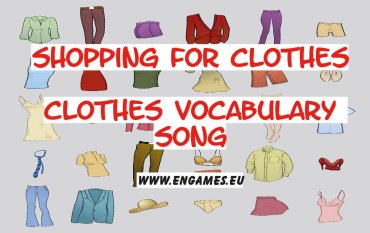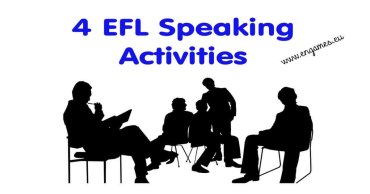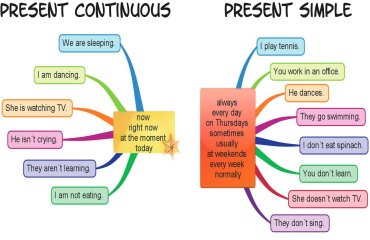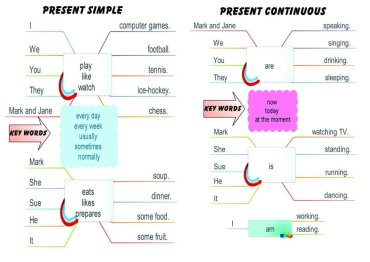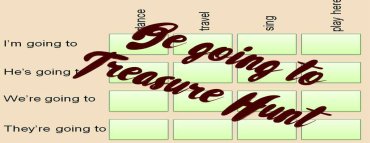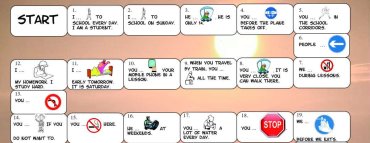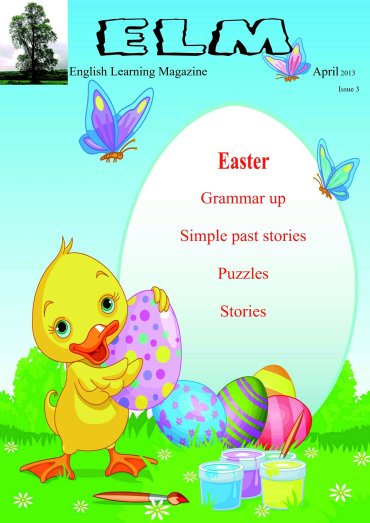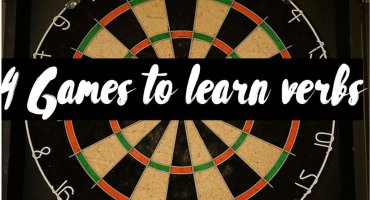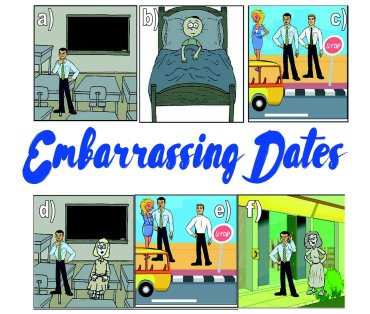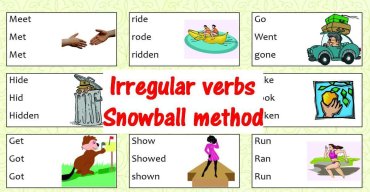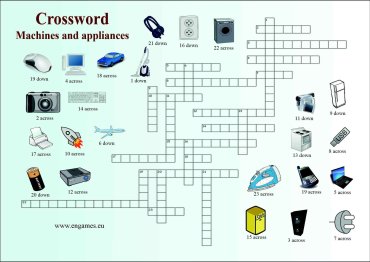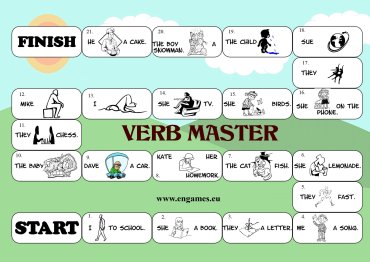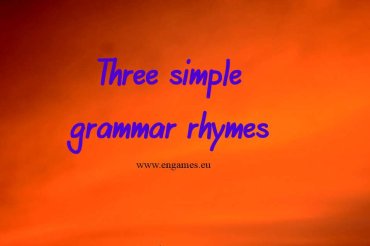In this post I would like to offer you several activities to teach Clothes vocabulary. Here, I will concentrate on teaching the following 15 pieces of clothes: a jacket, a dress, a coat, shorts, trainers, boots, shoes, trousers, a skirt, a shirt, a T-shirt, a hat, a cap, a tie and a jumper. This selection is based upon the textbook Project 1 (third edition).
<!– wp:more –>
To help you with your teaching, there is a song, a different kind of infographic, a pair crossword and an online Vocabulary Trainer. I hope these materials will make your lessons more interesting and effective.
Clothes vocabulary – Song
ADVERT:
[showmyads]
I always play the song and I ask my students to write down all the pieces of clothes they hear. Then I display the song and tell the students to check their answers.
Then I play the song and the students try to sing along.
Of course, you can take the lyrics and prepare a gap fill exercise if you want to.
Clothes vocabulary – infographic
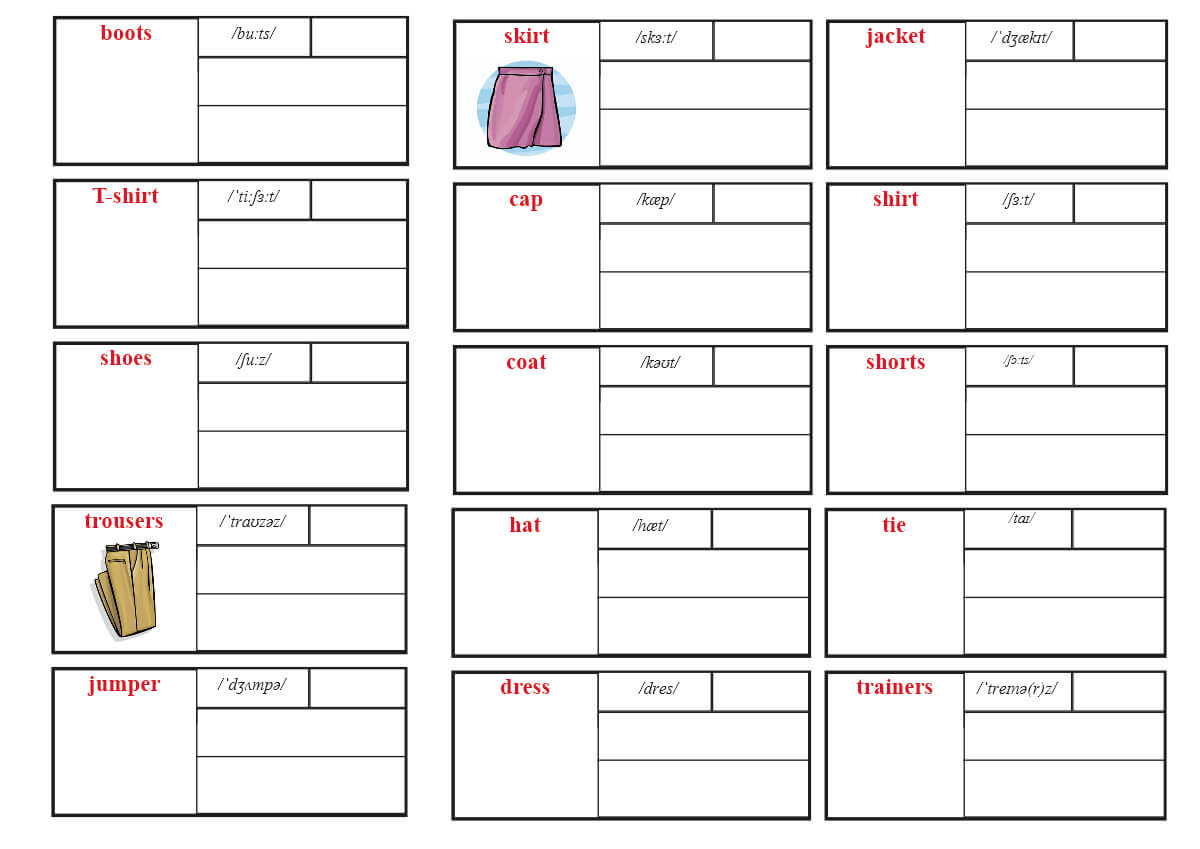
You can print the pdf version here:
Clothes vocabulary worksheetThen, tell the students to complete the worksheet in the following way:

Clothes vocabulary – Class activity
The following activity is called Pair Crossword. Seat the students in pairs and give each student one half of the following worksheet.
Pair crossword worksheet
ADVERT:
[showmyadsa]
Students do not show their crossword to their partner and they solve it. Then they work in pairs and their task is to solve the other half of the crossword. They do it in this way:
Student A: “One down. People wear it on their body/head/legs/feet.”
Student B: “Is it a cap?”
Student A: “No.” etc.
Students take turn and they communicate to complete their half of the crossword.
Clothes Vocabulary – online Vocabulary Trainer
The game works on desktops and mobile phones. Thus your students can practise the vocabulary wherever they are.
Vocabulary Trainer – full screen
Speaking activities should be the core of the communicative approach. However, there are many textbooks that come with very few exercises to practise this skill. And then you have to create your own. To save your time and energy I will share four speaking activities that worked very well in my classes.
<!– wp:more –>
EFL Speaking Activities – Draw the Picture
ADVERT:
[showmyads]
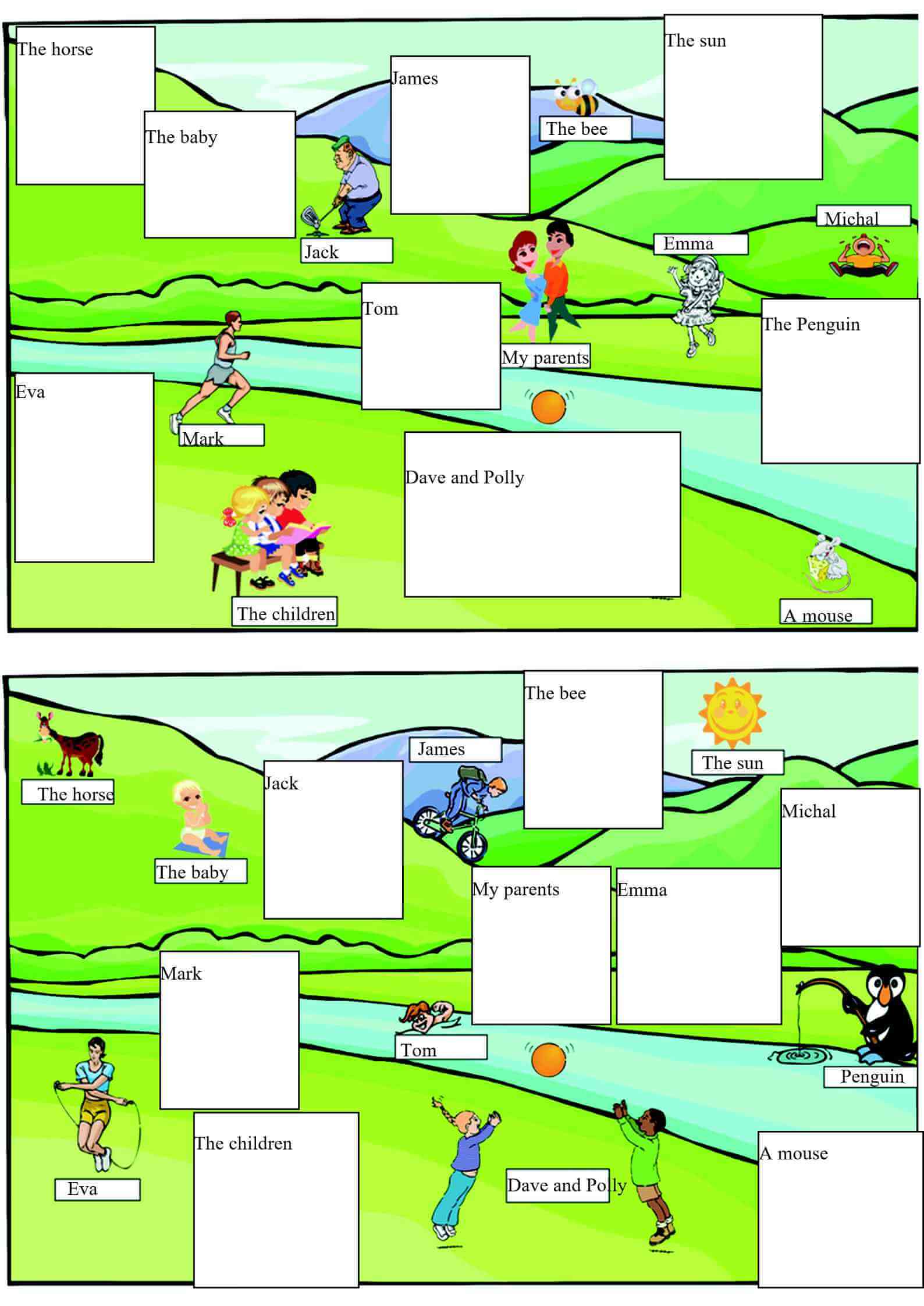
Parts of the worksheet are covered with white squares.
Seat the students in pairs and give one of them the worksheet A and the worksheet B to the other one. Students should ask about the people in the white squares and draw them into the picture.
Elicit the question: “What is …. (the name) … doing?”
One student asks and the other draws it into their picture. If you want to practise the vocabulary for clothes too, you could make the students ask the additional question: “What is …(the name)… wearing?”
Students take turns and they try to finish the picture.
This leads to a lot of speaking and communicating.
EFL Speaking Activities – Family tree
Ask the students to complete the worksheet for their families. Help them if necessary. If the students do not have the relatives, they should make the names up.
ADVERT:
[showmyadsa]
Then students work in pairs and one of the students dictates the names to the other one. It is a great opportunity to practise spelling. Once they finish, they swap roles.
Having finished, students turn the worksheet and try to complete the family tree for their family again. Once they have completed it, they dictate the names and their relationship to their partner.
In this way students practise the family relationships perfectly.
EFL Speaking Activities – Where is my Sock?
However, sometimes a miracle happens and I create an activity that works very well and my students like it. And exactly this occurred last week.
The activity is called Where is my Sock. After learning the rhyme Where is my Sock? from the textbook Happy House 2 (unit 5) I handed out the following picture to everyone.
Where is my Sock – houseThen students worked in pairs and one of them got the pictures of a sock, a bag and a shoe.
Where is my sock – things
“Is it in the kitchen?”
“No.”
“Is it in the bathroom?” etc.
Once the pupil found the objects, they swapped roles.
Students enjoyed the game and they practised the questions and the names of the rooms.
EFL Speaking Activities – Personal questions
Print the following worksheet. Each student needs one. Ask the students to make up the personal details. Just ask them to include @ and dot in the email and keep the telephone number reasonably long (nine digits in the Czech Republic).
Put the students in pairs and ask them to ask the questions and complete the second column.
Delete the questions you are sure your students know well and put them into different pairs. Students ask the questions again and complete the third column.
This activity works very well in a class in which students know each other fairly well.
In my previous post I offered several resources to teach the difference between the present simple and present continuous tenses. There are several exercises and games including an infographic. But, as my students complained that the infographic was not that helpful I created a new one.
<!– wp:more –>
Advert:
[showmyads]
In this post there is an infographic explaining the usage of the two present tenses using the key words and then there is a quiz where the students can practise their knowledge of the grammar.
I hope you like it.
Teach the present tenses – infographic
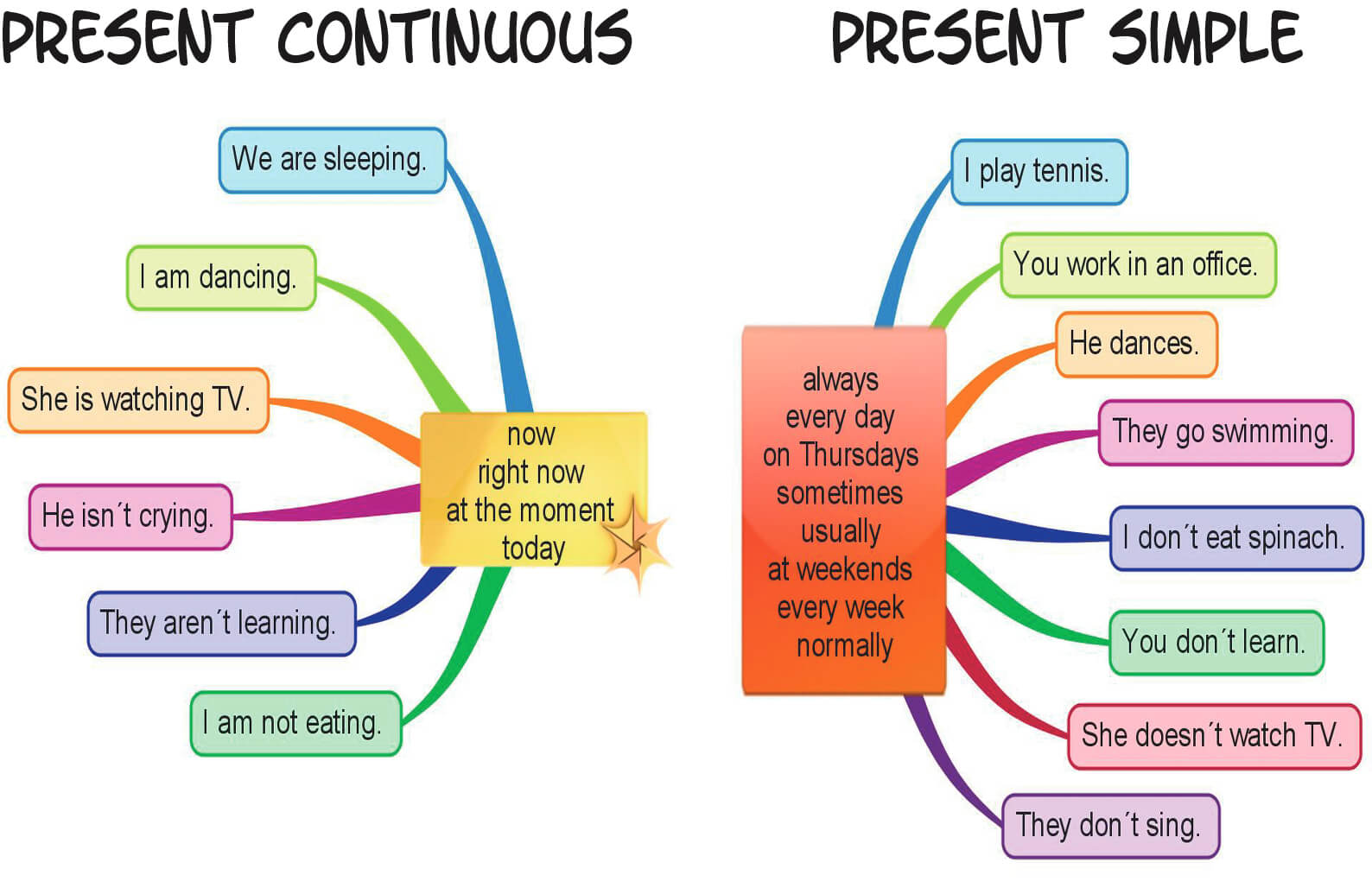
Elicit the usage of the present tenses. Students should understand that the present continuous tense is used when there are the words “now, at the moment, right now and today“.
If the words like “always, sometimes, on Tuesdays” etc. are used the present simple tense is often used.
Of course, this explanation is not 100% grammatically correct but for some students (and many textbook exercises) it works very well.
Emphasize that the students do not have to learn both of the lists. It is enough if they learn the words connected with the present continuous tense and use the present simple in all the other cases.
Present tenses – online quiz
Present tenses – online quiz
Present tenses – Darts
Type the correct answer and then score as many points possible.
ADVERT:
[showmyadsa]
Sometimes it is very difficult for students to decide whether they should use the present simple or the present continuous tense. To help them decide correctly, I will share several activities with you. These activities make it clear which tense the students should use and how to form it.
<!– wp:more –>
ADVERT:
[showmyads]
In this post there are two comic stories and an accompanying worksheet. Then there is an infographic focusing on the keywords which are often connected with the tenses. And the last activity is an interactive game to practise the usage of the two tenses.
Present simple or present continuous – Comics
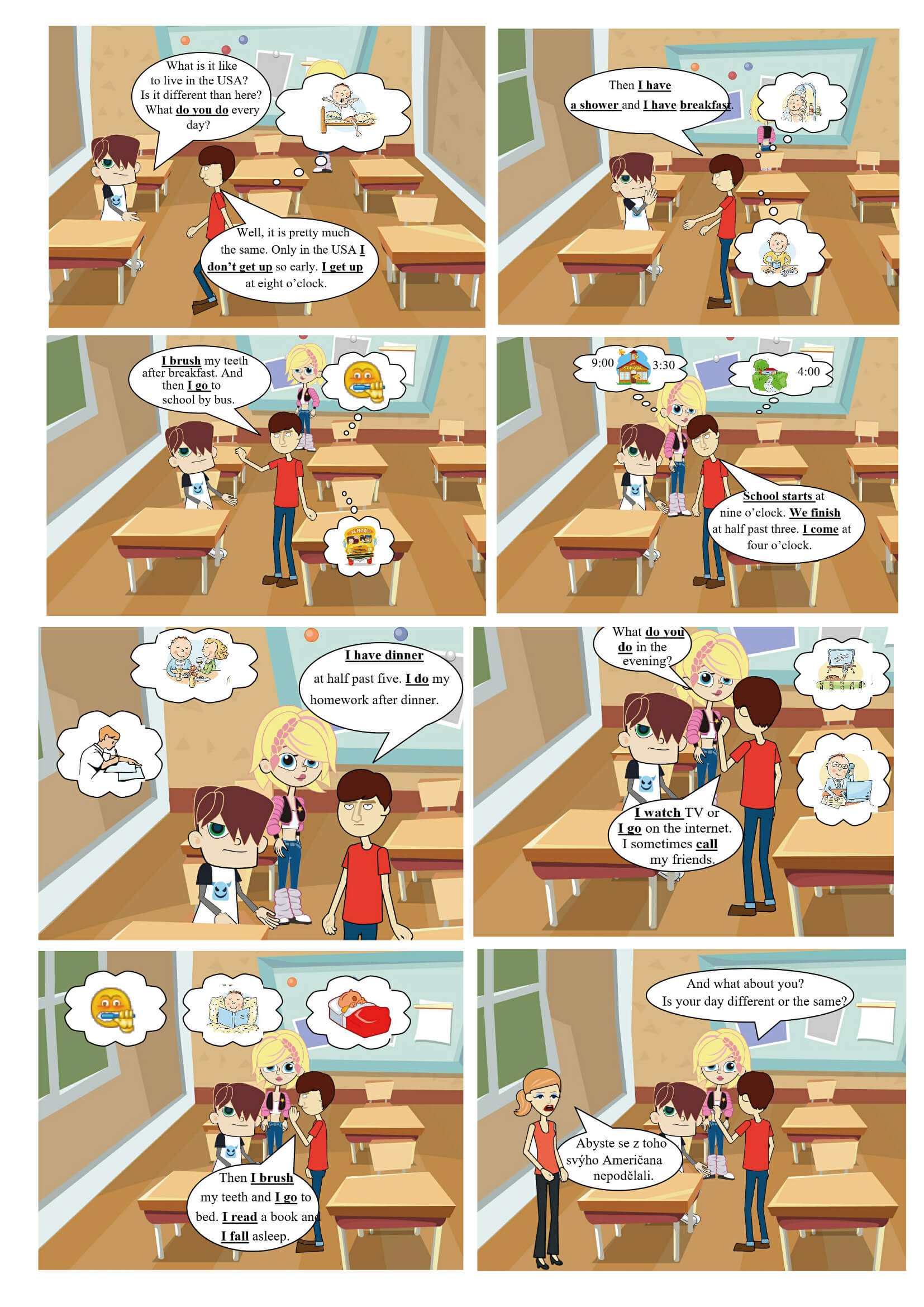
Now, print the following worksheet and your students should complete the first exercise.
Present simple worksheetCheck the answers and then ask the students to write sentences into the table in exercise 2. It is a good idea to elicit the first line before they start.
In the exercise 3, students write about their normal day.
As an additional activity, you can ask the students to use the comic story and retell the American´s day. Thus they can practise the third person singular.
Now, it is time to hand out the second comic.

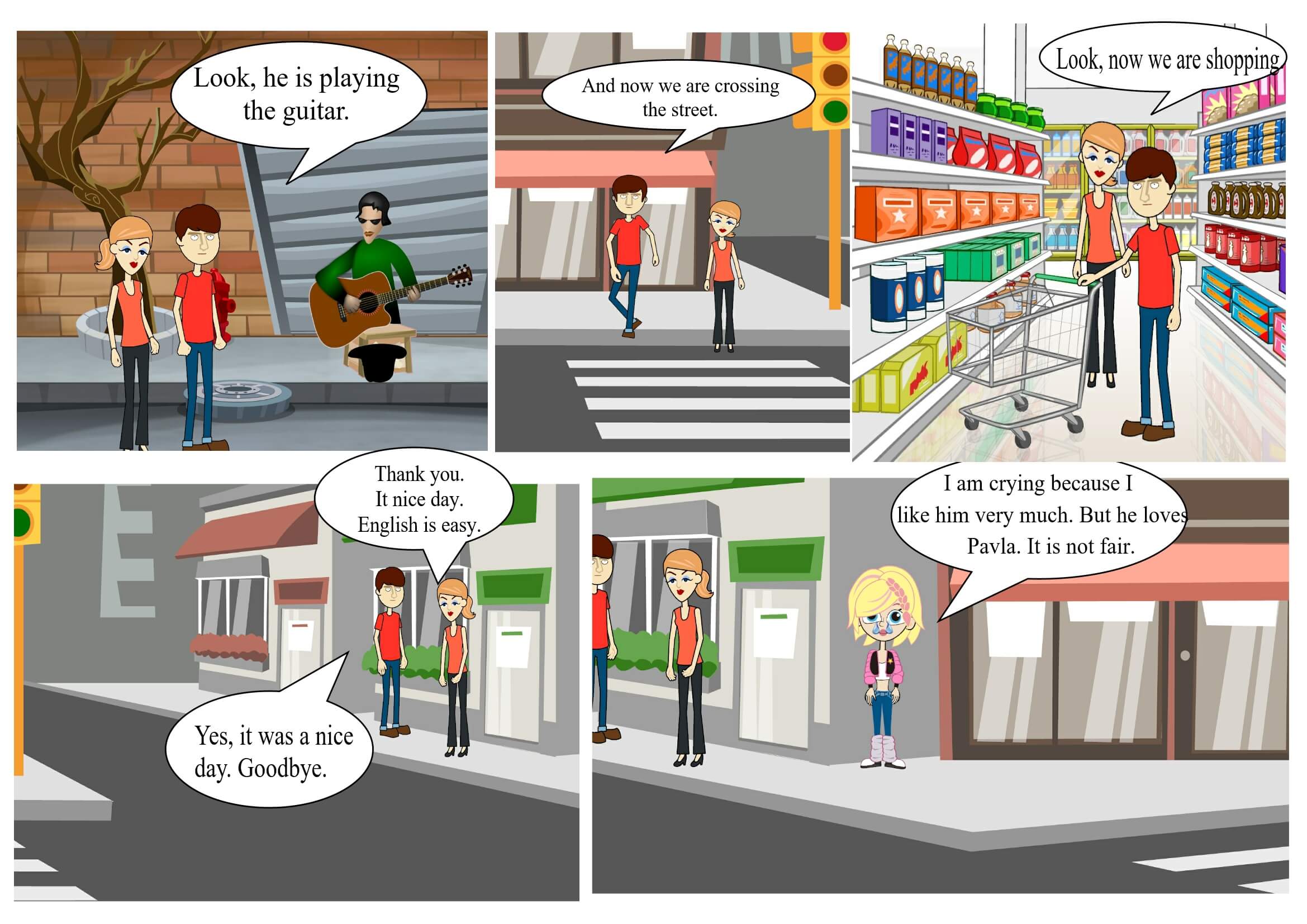
You can print the comic here:
Present continuous comicStudents should read the comic and answer the questions in exercise 4 in the worksheet above.
Present simple or present continuous – explanation
Others might profit from the following infographic which focuses on the key words.
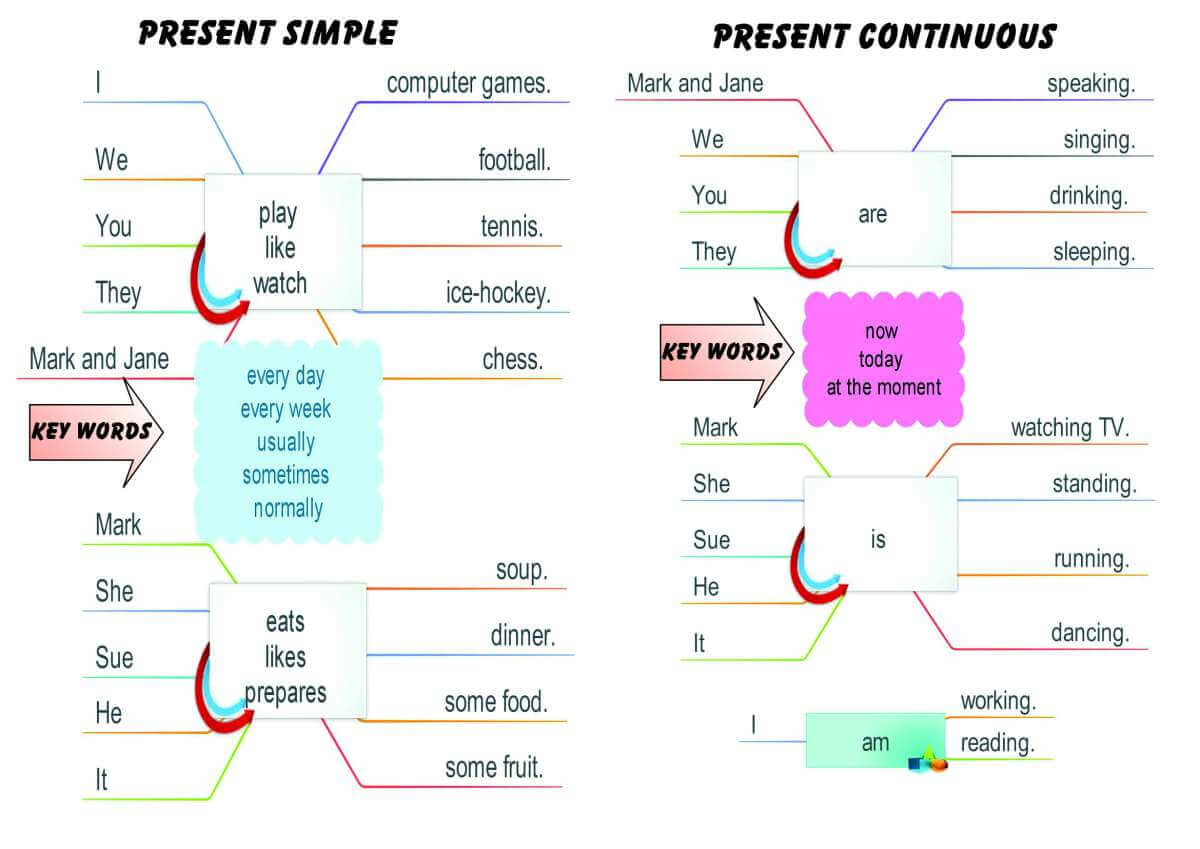
Present simple or present continuous – games
Students work in pairs. They choose a square where they would like to enter their cross or nought. However, they can do so only if they form a correct sentence using all the words of the coordinates for the given square. If they make a mistake they cannot draw anything. If they are not sure, they can check the sentence in the key grid.
The winner is the student who manages to draw four symbols next to each other.
The following game is called Quiz Darts. Your task is to put the verb in the correct tense and if you answer correctly, you can throw the dart. Your task is to score as many points as possible.
ADVERT:
[showmyadsa]
You can play the game on the full screen here:
Present tenses – darts game
Present simple or present continuous – more
The difference between present simple and continuous
Present simple or present continuous – improved
Present simple and continuous tenses
Which activity did you like best?
The following set of activities is for false beginners and elementary students of English. The aim of these activities is to practise the usage of the form be going to and reinforcing this form.
<!– wp:more –>
Be going to – Preparation
ADVERT:
[showmyads]
Be going to worksheet
Be going to – Treasure hunt
1. Display the first slide and tell students that they need to find ‘buried’ treasure under one of the squares. Ask them to give you the coordinates of the square by saying the sentence. Click on the squares to reveal what is beneath. Correct pronunciation and elicit the long forms of I’m, He’s, We’re and They’re.
You can download the powerpoint presentation here:
Be going to Powepoint presentation2. Display the second slide and tell the students that now you have put the treasure in a different place and that they can find it by making negative sentences. Once they find the treasure, tell them that they are going to play a similar game in pairs.
3. Hand out exercise 1 from the worksheet. You might want to elicit all the sentences and check pronunciation before the students start working in pairs.
4. Ask the students not to show their paper to anyone and to hide four treasure chests in the grid by writing four Xs. Then they try to find their partner’s treasure as in steps 1 and 2 above. When the guessers find one of the crosses, they should write it in their copy of the grid; when they find a blank square, they should draw a line through it. Let them play for a maximum of five minutes.
5. Display the third slide. This time students find the treasure by making questions.
6. Hand out exercise 2 from the worksheet. The students play the same game as before, but this time they make questions. At the end of this activity they should be familiar with all the forms of ‘be going to’, so now it’s time for how to use it.
Be going to – Future plans
8. Elicit the use of the form – for your plans for the future.
You can use the following infographic to explain the form:
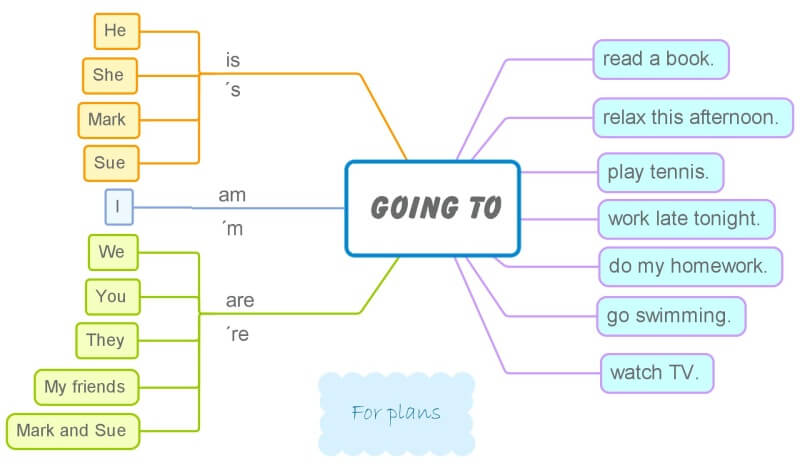
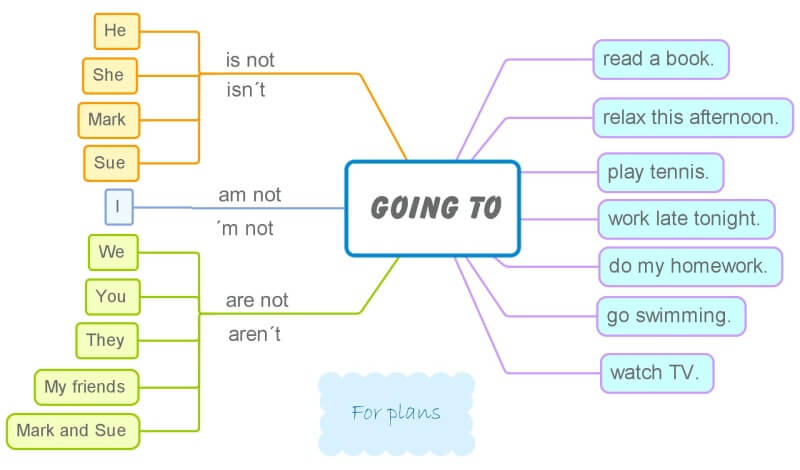
ADVERT:
[showmyadsa]
Be going to – infographic
9. Display the fifth slide, hand out exercise 3 from the worksheet, and ask the students to write down your plans for the given times. After five minutes collect the sentences and check them during the next activity. Suggested answers are given at the bottom of p.5.
10. Hand out exercise 4 from the worksheet and ask the students to draw their plans in the grid. Tell them that they have only five minutes to do this and they mustn´t write words. If they don’t have any plans, they should make them up. In the meantime, check their answers to the previous activity.
11. The students work in pairs to guess what their partner is going to do, using the pictures. They should use yes/no questions and short answers. Demonstrate with one of the students, using your plans on the PowerPoint slide:
A: Are you going to buy a kite next month?
B: No, I’m not.
A: Are you going to fly a kite next month?
B: Yes, I am.
12. Return the students’ sentences from exercise 3 and give feedback.
Be going to – follow up
1. If students need further practice with the form, you could use the following drill:
Say the first sentence and ask the students to transform it using the word you give them. Demonstrate the first one or two.
I’m going to play tennis tomorrow.
you: You’re going to play tennis tomorrow.
football: You’re going to play football tomorrow.
Here is the sequence:
I’m going to play tennis tomorrow.
you / football / watch / they / TV / next week / buy / we / he / a car / she / question / you / he / drive / negative / I
2. Hand out exercise 5 from the worksheet. Check vocabulary before students start the pair work. They then work in pairs to ask and answer the questions.
3. You can find a great infographic and more teaching ideas on be going to here.
4. There are some great ideas on teaching Be going to at British Council site.
Recently I have spent quite a lot of time designing various speaking activities for my students. In this post I would like to share two speaking activities which help students practise the usage of the past continuous tense and of the modal verbs MUST, MUSTN´T and DON´T HAVE TO. I hope both of the activities will be useful.
<!– wp:more –>
Past continuous tense – game
[showmyads] Students put six activity cards into the plan. Each activity goes into one square and they must not show their plan to anyone.
Then the students try to guess when the people were doing the activities. They ask in the following way:
A:Was Jane playing football?
B: Yes, she was.
A: Was she playing football at six o´clock?
B: No, she wasn´t. It is my turn.
Each student asks questions till their partner answers NO. Then they swap roles. The aim of each student is to guess all the activities and times in their partner´s plan. If a student guesses an activity and time, their partner removes the activity from their plan. The one who has no activities in their plan lost.
In my experience, students love this activity and it is a great way to practise the questions in the past continuous tense.
Modal verbs – board game
Here are the correct answers:
The rules of the game are simple. Each student has a counter and they throw a die. They move ahead. If they produce the sentence they land on correctly, they stay where they landed, if they don´t they move back to the Start.
ADVERT:
[showmyadsa]
Explain that the students have to produce sentences with the verbs MUST, MUSTN´T and DON´T HAVE TO only.
Speaking activities – Your Opinion
Which activity do you like better:
Present continuous tense is one of the most popular tenses among students. It is easy to form and its usage is crystal clear (at least at the beginning). However, when it comes to forming questions, students often fail. To avoid this, I have come up with a number of activities to help my learners and I would like to share them with you now.
<!– wp:more –>
ADVERT:
[showmyads]
In this post, there is a video to teach the question word, an infographic, several interactive exercises and logical worksheets.
Present continuous YES/NO questions
Present continuous questions – worksheet In the first part, there is a column of sentences which students should transform into questions. Tell them to use the colours to guide them. Help those struggling. Check the questions. Then tell students to transform the sentences in the second column.
Now your students should be able to form questions in the present continuous tense. And as they discovered the rules themselves, they are sure to remember them well.
Present continuous tense – short answers
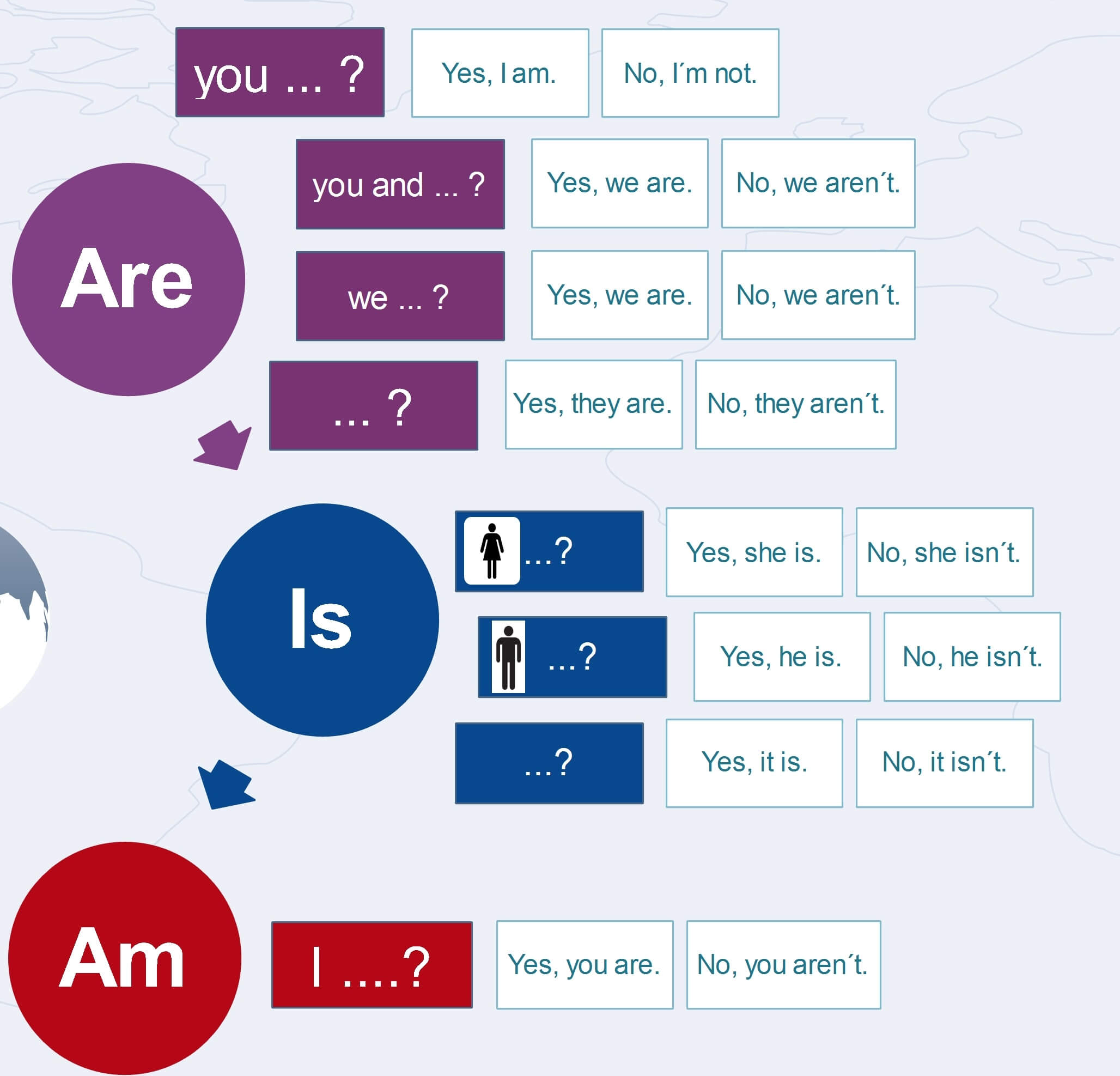
Demonstrate how the infographic works. Write one of the questions on the board. Ask the students with which word the question starts. Point to the word in the infographic. Elicit the colour. Now, point to the question on the board and elicit what follows the first word. Find the continuation in the rectangles and explain that the correct answers are the two possibilities behind it.
It took just two examples for my students to understand the formation of the short answers.
Return to the worksheet and ask the students to write both of the short answers below the questions they formed previously. Check their answers.
Question words – video and infographic
You can use the following infographic too:
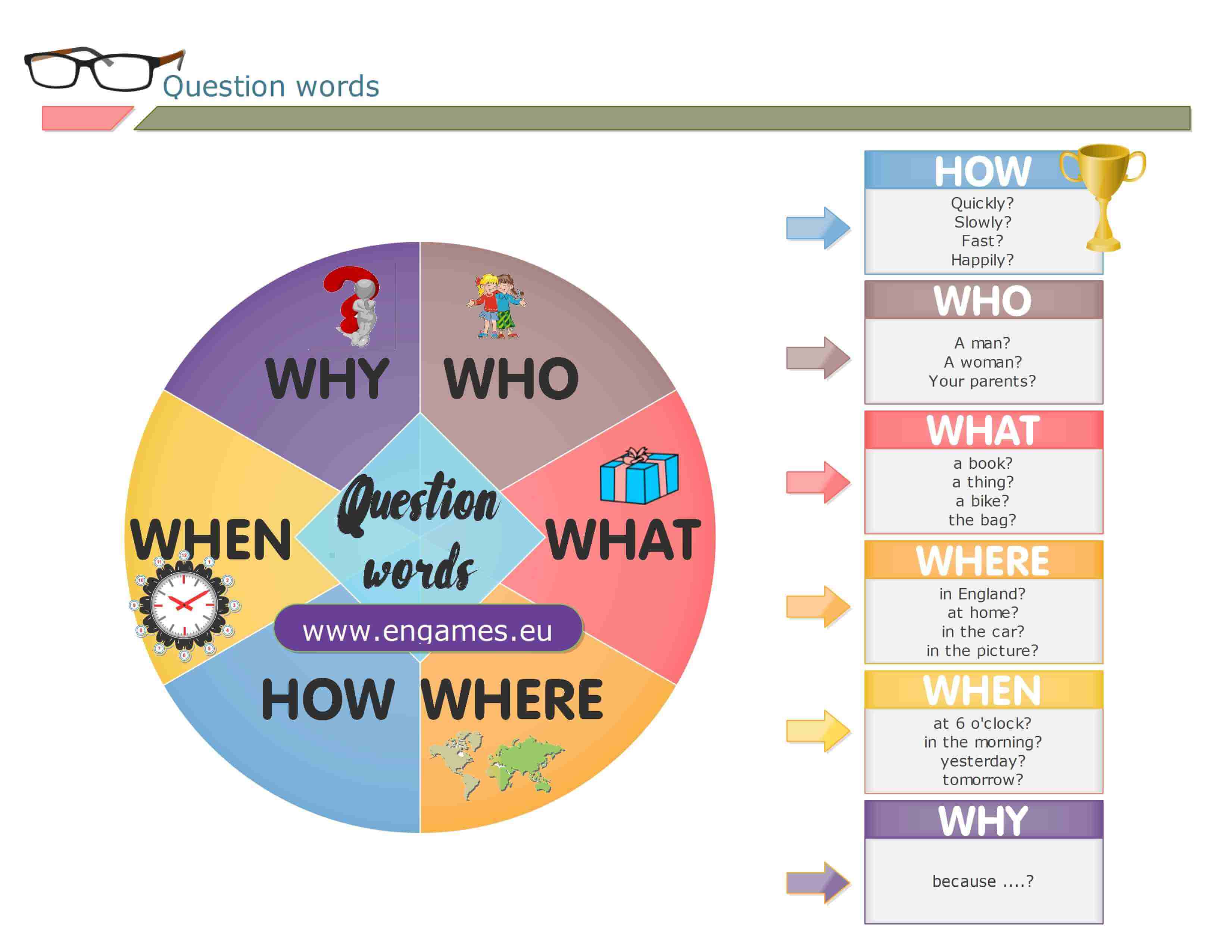
Once the students know the basic question words, it is time to practise them. In the following video students see the answer and their task is to supply the correct question word.
Present continuous questions
Print the following worksheet.
ADVERT:
[showmyadsa] Present continuous WH questions – worksheet
Ask the students to form questions in the first column asking about the information in colour. Point to the colourful question words at the bottom of the worksheet which will help your students.
Check the answers and tell them to complete the second column.
Finish the worksheet above in one lesson and then bring the following worksheet. This worksheet contains three exercises. In the first exercise students see the answer and their task is to write the question words. In the second task, students see the answer and they should ask about the underlined information. In the last exercise, students see the answer and they should write three questions for the given answer.
Present continuous questions – worksheet 2
Present continuous questions – more exercises
Present continuous questions – quiz 1 In the second quiz students have to write the short answers:
Present continuous questions – quiz 2 In the third quiz students know the answers and they have to write the questions.
Present continuous questions – quiz 3 In the fourth quiz, students have some cues and they have to write the questions using the cues.
Present continuous questions – quiz 4 If you cannot use a computer in your classroom, you can use the following worksheet with all the exercises.
Present continuous questions worksheet
Speaking activities are essential in a communicative approach. Most people agree that students should communicate ever since they start learning English. However, it is really difficult to design genuine communicative tasks for low-level students of English. In this post, I would like to share two communicative tasks for beginners. In the first one, students practise the verb HAVE GOT and in the second one they go shopping for clothes. I hope you like them.
<!– wp:more –>
ADVERT:
[showmyads]
Speaking activity – HAVE GOT
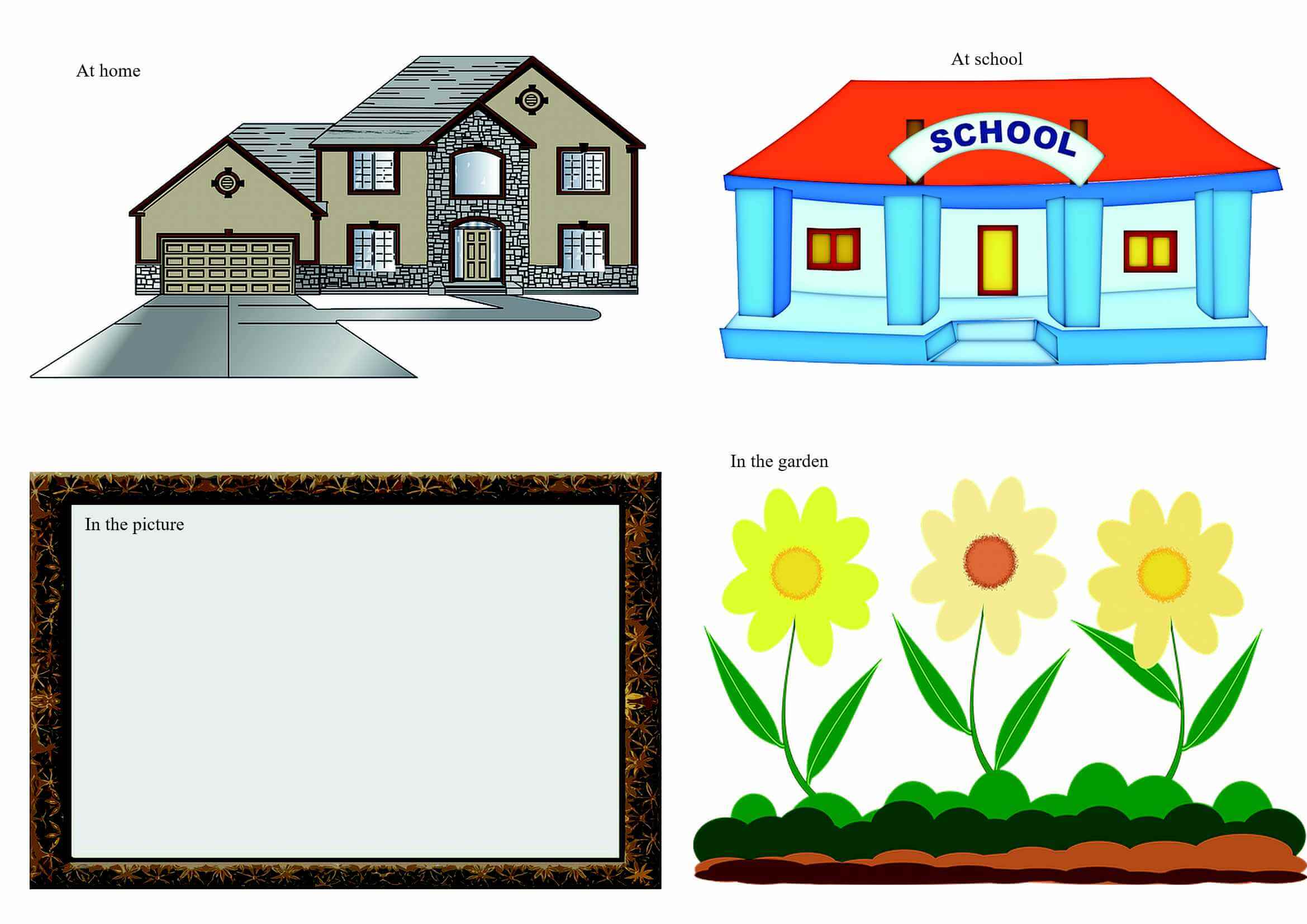
Second, each student needs to cut the following picture into the pictures.
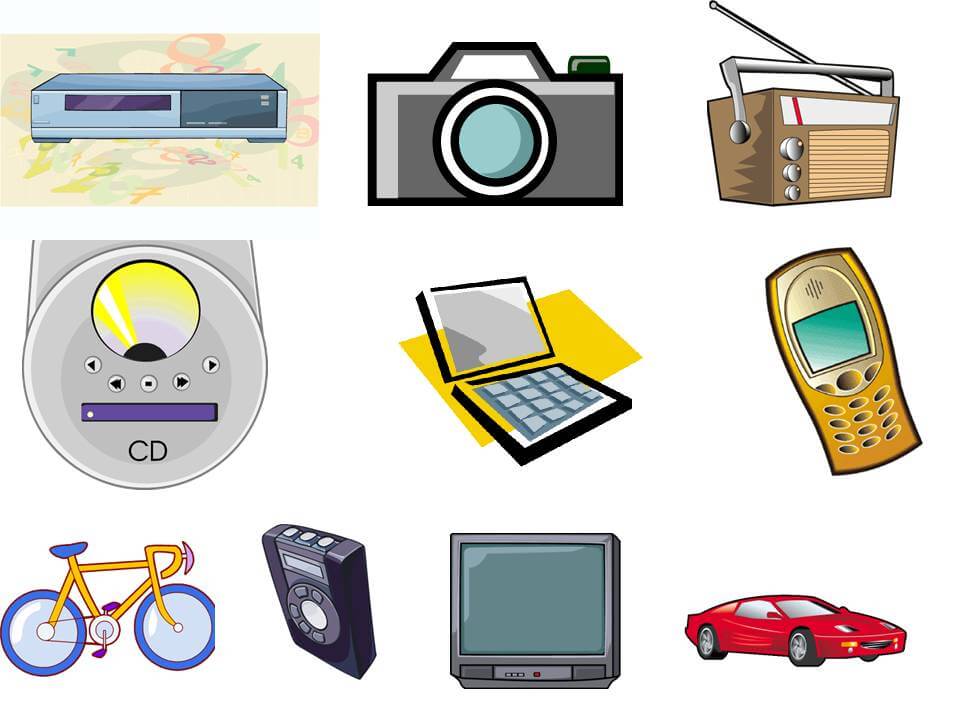
Each student places four of the machines into their picture (one machine is in the garden, one is at home, one is in the picture and one is at school). They must not show their board to anyone.
Students work in pairs and they try to guess what their partner has placed in the places. They have to ask: “Have you got a computer?” If the answer is YES, they go on. “Have you got the computer in the garden?” If the answer is YES again, the thing is removed from the game. If the answer is NO, students swap roles. Students swap roles every time they answer NO.
The winner is the student who removes the four things from their partner’s plan first.
Students love the game.
You can download the worksheets here in pdf file.
Have Got speaking worksheet
Speaking activity – SHOPPING
Print the following worksheet. Students work in pairs and each of them has one half of the worksheet. They must not show their worksheet to their partner and their task is to find out how much they have to pay for the clothes with no price tags. They should use the dialogues in the boxes. Point out that they should use the blue dialogue for the clothes in the blue square and the yellow dialogue for the ones with the yellow background.
ADVERT:
[showmyadsa]
Shopping for Clothes – speaking activity
Speaking activity – your opinion
Which of these activities do you like better:
Easter is coming and many teachers are looking for materials connected with Easter. Here, I am offering a magazine full of materials connected with Easter for learners of English. I hope you like it.
<!– wp:more –>
ADVERT:
[showmyadsa]
Easter – English learning magazine
Elementary students often struggle with verbs. They know very few of them and this deficit becomes obvious at the moment they start learning the past simple tense. To help them I created the following post where I try to teach 22 frequent verbs and their past tense.
<!– wp:more –>
In this post, you can find an infographic with all the verbs and four games to learn the verbs.
Verbs in the past simple tense – infographic

You might ask your students to divide the verbs to regular and irregular verbs, too.
Verbs in the past simple tense – games
[wptabsy] [tab]Darts game[/tab] [tab]Dice game[/tab] [tab]Time game[/tab] [tab]Length game[/tab] [tabcontent] In this games, students should write the verbs. They must divide the verbs with a comma and a space. If they answer correctly they have to stop the dart to get as many points as possible. The highest score they can achieve is 60, if they stop the dart in the triple of the number 20. The aim of this game is to get as many points as possible.
ADVERT:
[showmyadsa]
Darts game – full screen
[/tabcontent]
[tabcontent]
In this games, students should write the verbs. They must divide the verbs with a comma and a space. If they answer correctly they have to stop the dice to get as many points as possible. They get one point for each point on the dice and they get 10 points bonus if the dice show the same number.
ADVERT:
[showmyadsa]
ADVERT:
[showmyadsa]
Length game
[/tabcontent]
[tabcontent]
In this game, student write the verbs. They must divide the verbs with a comma and a space. If they answer correctly, they have to stop the countdown when it reaches zero. The closer to zero they get the more points they get.
ADVERT:
[adinserter block=”2″]
Guess the time game
[/tabcontent]
[/wptabsy]
Which game do you like best
My first English language teaching activity got published in August 2008. It happened on the site http://www.teachitelt.com. The site regularly sent me the royalties and I created several more activities for them. Unfortunately, recently they sent me an email that the site is going to finish on 30th March 2016. The good thing is that they returned the rights to me and I am allowed to used the materials I created in any way I like and publish them wherever I like. So, here I share the first lesson plan I created. It is called Embarrassing Dates.
<!– wp:more –>
ADVERT:
[showmyads]
Embarrassing dates – warmer
Tell them the following story. It is true story which happened to me, so you can introduce it as a story which happened to one of your friends and colleagues to catch students’ interest.
‘When I was about 17, I used to attend dancing lessons after school. One evening, after a lesson, my schoolmate and I were going home. It was late and it was dark. We came to a bus stop and we were waiting for a bus when I noticed a beautiful blond girl also waiting.
We started talking to her and we soon found out that she went to the same school and that she loved literature, like me. My friend wasn’t interested, but I liked her very much and we talked the whole way back.
I couldn’t sleep that night. I was thinking about her and remembering everything we said. I couldn’t wait to see her again.
So, the next morning I started looking for her, but I couldn’t find her for some time.
In the end I found her in a classroom. I was a bit shocked, because she didn’t look quite as perfect as the night before, but I thought that looks weren’t that important. So we agreed to go shopping that afternoon.
But the afternoon turned out badly. I soon found out that she was really bossy and she ordered me around the shop like a small boy. I felt embarrassed and I was happy to say goodbye. We never met again.’
Now ask the students to look at the pictures and put them into the correct order:

Answer key: c, e, b, a, d, f
Now ask the students to retell the story. You could have them work in pairs and take turns to recount a picture each, or tell it cumulatively, repeating what their partner said before moving on to the next picture. Monitor and correct. At the end, ask one or two students to tell the whole class the story or have students tell it round the class. You could then give whole class feedback.
Embarrassing Dates – vocabulary
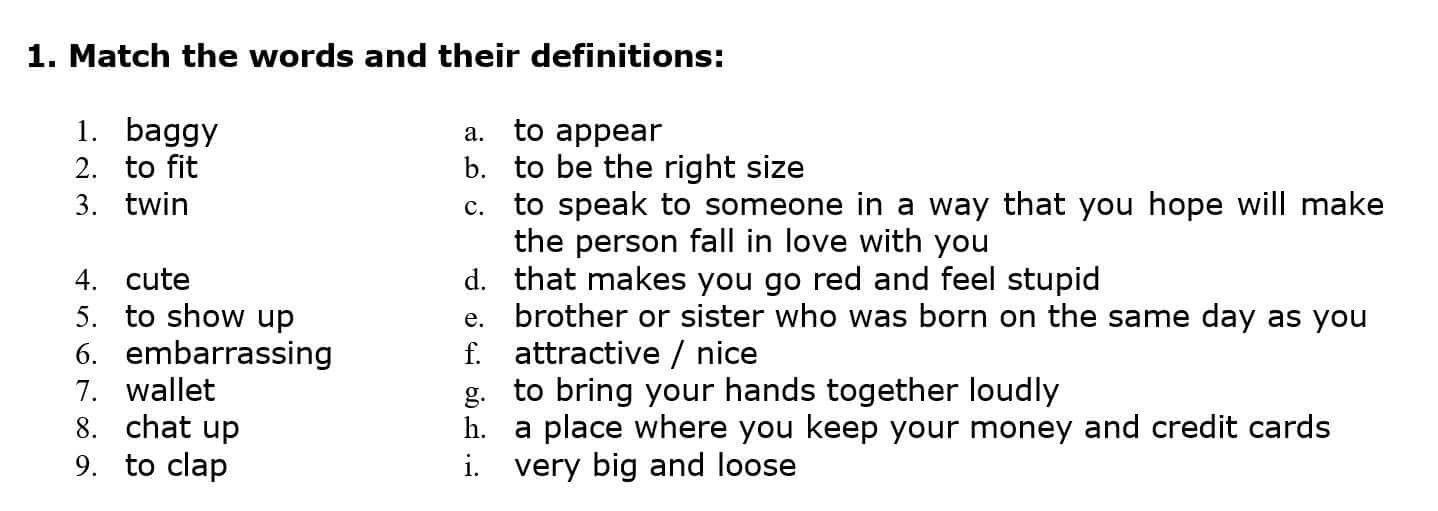
Answer key
1.i, 2.b, 3.e, 4.f, 5.a, 6.d, 7.h, 8.c, 9.g
Sudoku
Sudoku has been very popular recently, but I bet that your students have never done one with words. It gives them practice writing and memorising the new vocabulary. Afterwards, you could have students cover the words in the matching task with a blank sheet of paper and write the words back in next to the definitions.

ADVERT:
[showmyadsa]
Embarrassing Dates – reading
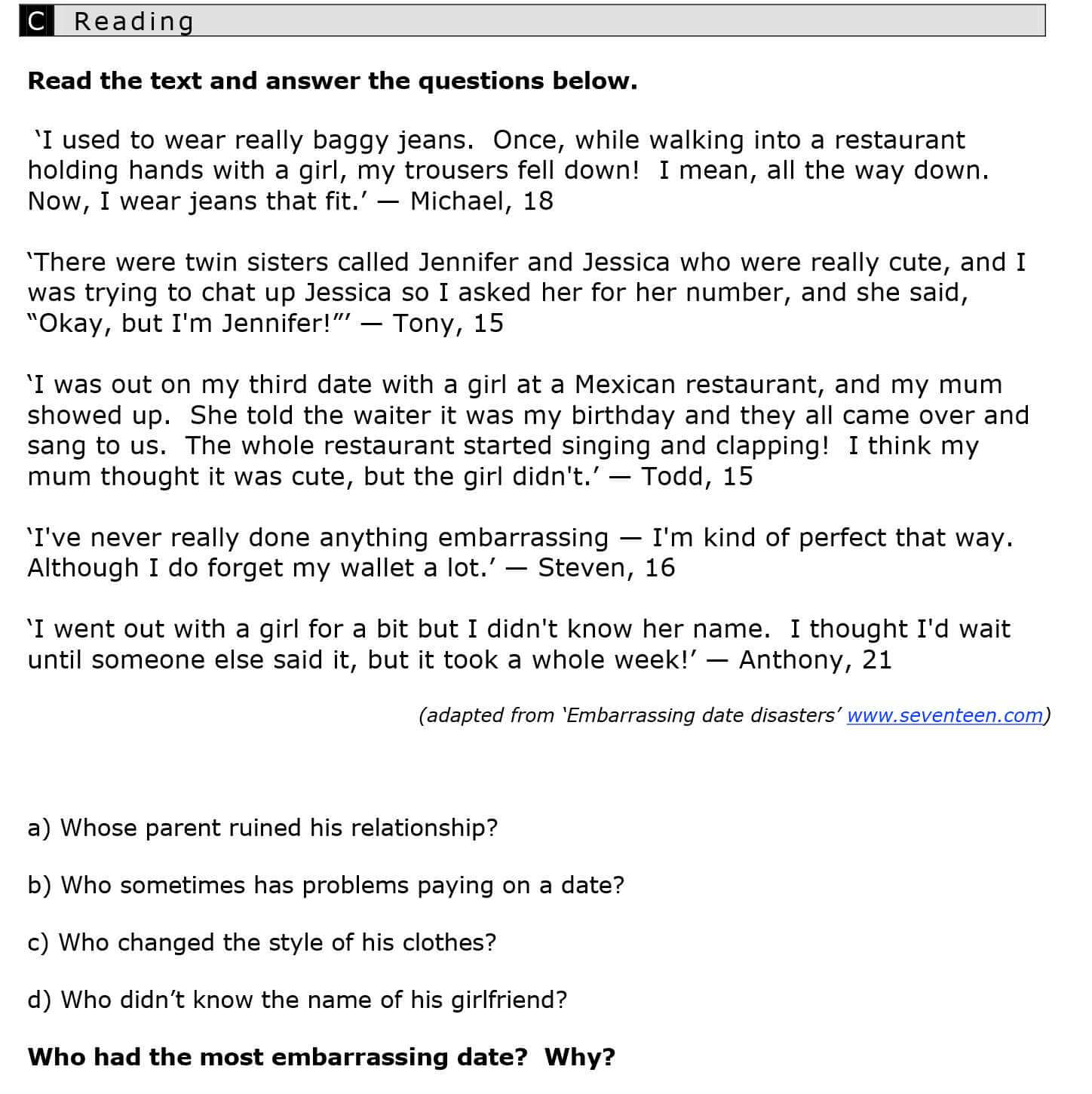
Answer key
1. Todd’s; 2. Steven; 3. Michael; 4. Anthony and Tony
Embarrassing Dates – grammar

Crossword answer key
1 fell down; 2. twin; 3. embarrassing; 4. showed up; 5. chat up; 7. clap; 8. wallet; 9. cute
Solution: first date
Embarrassing Dates – Follow up
You could get older students to speak about their own embarrassing dates.
You can download the full worksheet here:
Embarrassing Dates worksheet
I have always wanted to be a writer. Ever since I was ten I dreamt of publishing a book. And on Saturday, thirty years later I did it. I published a book called 444 Grammar Conversations. This book is for teachers of English to have a set of questions they can use to practise a grammar point in a conversation. And in this post I would like to share with you ten speaking activities, you may find useful when using this book. All the following activities are based on a list of questions.
<!– wp:more –>
ADVERT:
[showmyads]
10 Speaking Activities
a) The simplest speaking activity is, that you print the questions for everyone and students work in pairs and read the questions and answer them.
b) Write the questions just once for each pair and give the copy to one student in the pair. The student with the handout asks the questions and the other answers them.
c) Print one copy for each pair and cut it in half. Each student asks their questions and answers the questions their partner asks.
d) My favorite activity is called Clock speaking. Divide the questions into several sections and write a time instead of a number to each section. Tell the students to find a different partner for each section. Then say what time it is and students have to work with the partner they have arranged. They ask the questions and answer them.
Here you can see an example worksheet for the Clock Speaking activity:

e) Give each student a copy of the questions and ask them to choose 5 questions they like. Then they work in pairs and ask only the questions they chose.
And here, there are five more speaking activities fot the book 444 Grammar Conversations :
f) One student answers a question from the list and the other has to guess which question was answered.
g) Students work in pairs and one student asks and the other has to answer for a set time (e.g. 15 seconds). In this way, students are made to speak longer.
ADVERT:
[showmyadsa]
h) Students ask and answer the questions in pairs, but they can lie. The interviewer has to guess when the speaker is lying.
i) Give each student only two questions from the set. Each student has different questions. Students mingle and ask the questions they have on their slip of paper and they answer the questions the others ask.
j) Forbidden words: Students work in pairs and they ask and answer the questions but they must not use the words YES, NO and I don´t know. (Of course you can select other words).
What do you think of the book:
It is quite easy to form comparatives and superlatives in English. However, without much practice students will make a lot of mistakes.
To provide enough practice for my students I have created the following exercises. There are three gap-fill exercises where students will practise the grammar in context.
<!– wp:more –>
ADVERT:
[showmyads]
In this post, there are three interactive exercises and a word file with the same exercises to practise the grammar.
Comparing in English – infographic
Show it to your students and explain that students first have to decide if the adjective is long or short. If the adjective is just 1 syllable, it is short. If it ends with -y, it is short. Otherwise, it is long.
Once they know whether the adjective is long or short, they can form the superlatives and comparatives correctly. With short adjectives, they add the suffixes -er or -est. With long adjectives, they add more or most in front of the adjective.
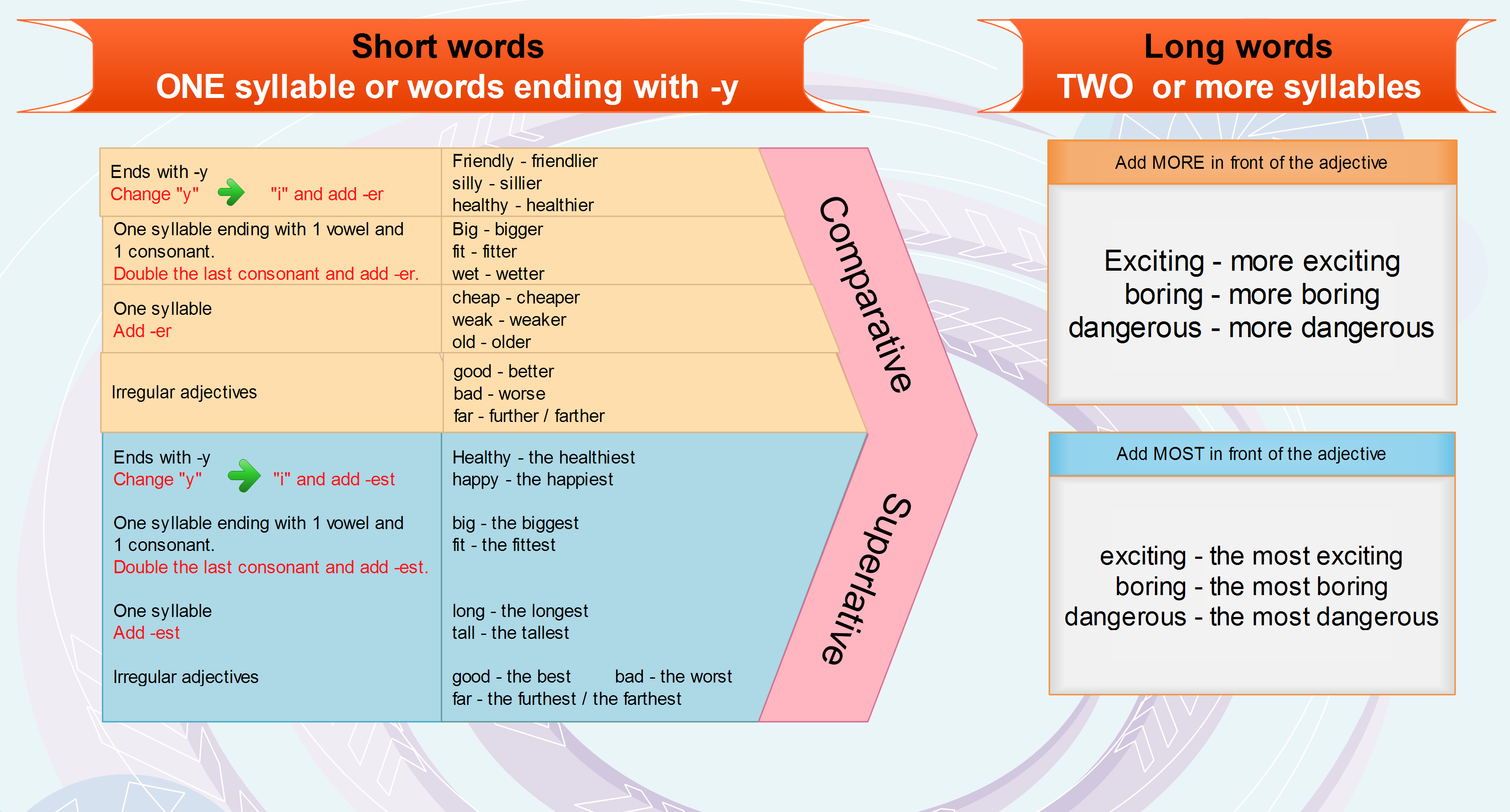
You can find the pdf version of the infographic here:
Comparatives and superlatives infographic – pdf
Comparatives and superlatives – online quizzes
There are three quizzes:
[showmyadsa] Quiz 2 Quiz 3
You can print two of the quizzes and use them in the classroom:
Comparatives and superlatives
Comparing in English – Links
Comparatives and superlatives activities
Comparatives and superlatives speaking activities
Moreover, there are very interesting activities to use in your classroom at British Council site.
I hope you will find this post useful and that your students will practise a lot.
Irregular verbs are probably the most important verbs in English. There are quite a lot of them and they are very common. However, for many ESL and EFL students they are very difficult to learn.
<!– wp:more –>
I have already prepared many activities to teach the irregular verbs to my students. There are irregular verbs from the rap song by Fluency MC, there are several stories to learn the verbs in context and there are many infographics to make the learning a bit easier.
ADVERT:
[showmyads]
Having tried all of these, I have to say that the most effective way of teaching irregular verbs in English is the SNOWBALL method. This method does not promise to teach you 100 verbs in 10 minutes. You have to study the verbs for 10 days in a row to learn these, but then I can guarantee that you will remember more than 90% of these verbs. So why don´t you try it for yourself?
Snowball method – How does it work?
Moreover, if you make a mistake, the verb is repeated again until you get it right or until you make 3 mistakes.
Irregular verbs – infographics
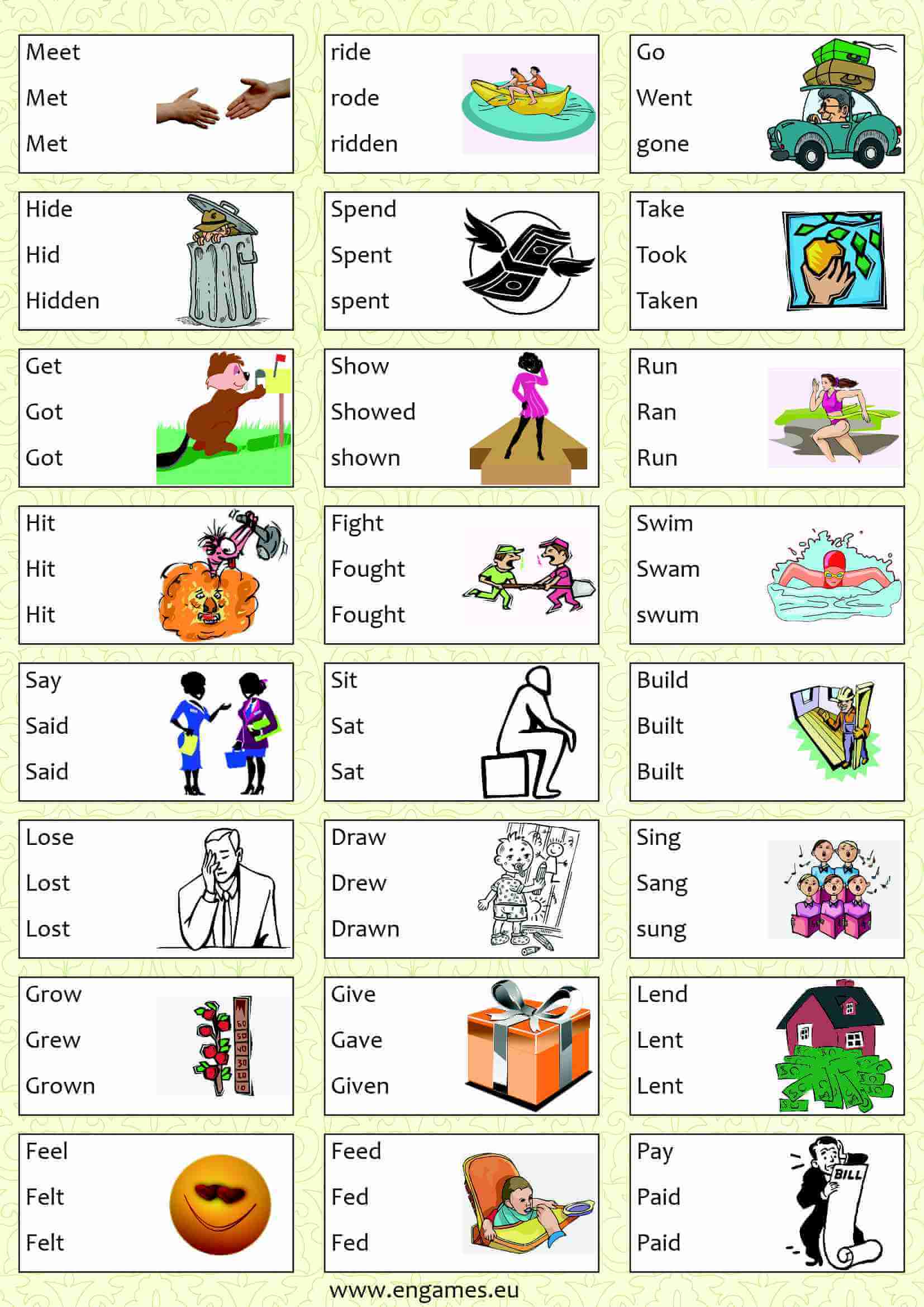
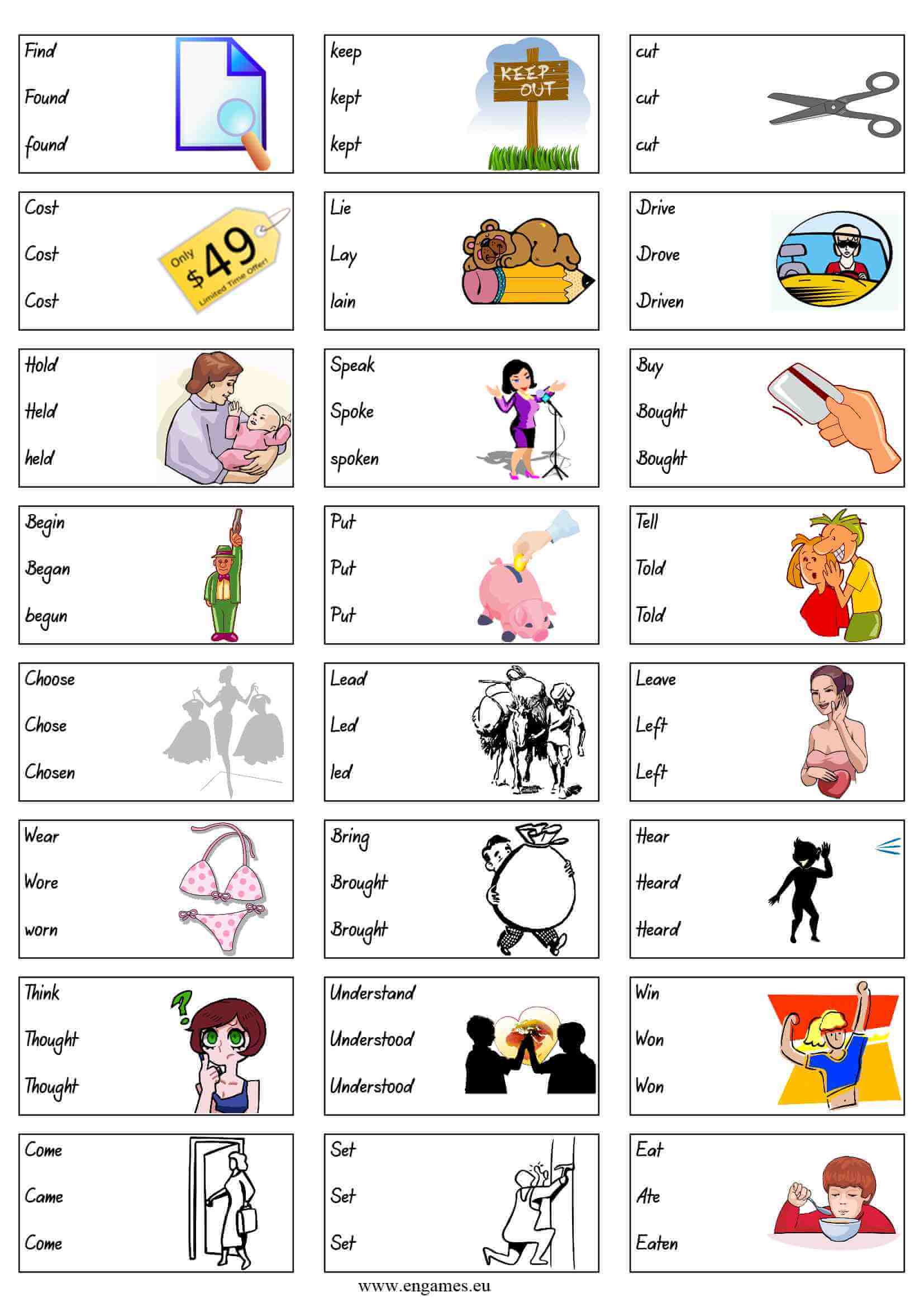
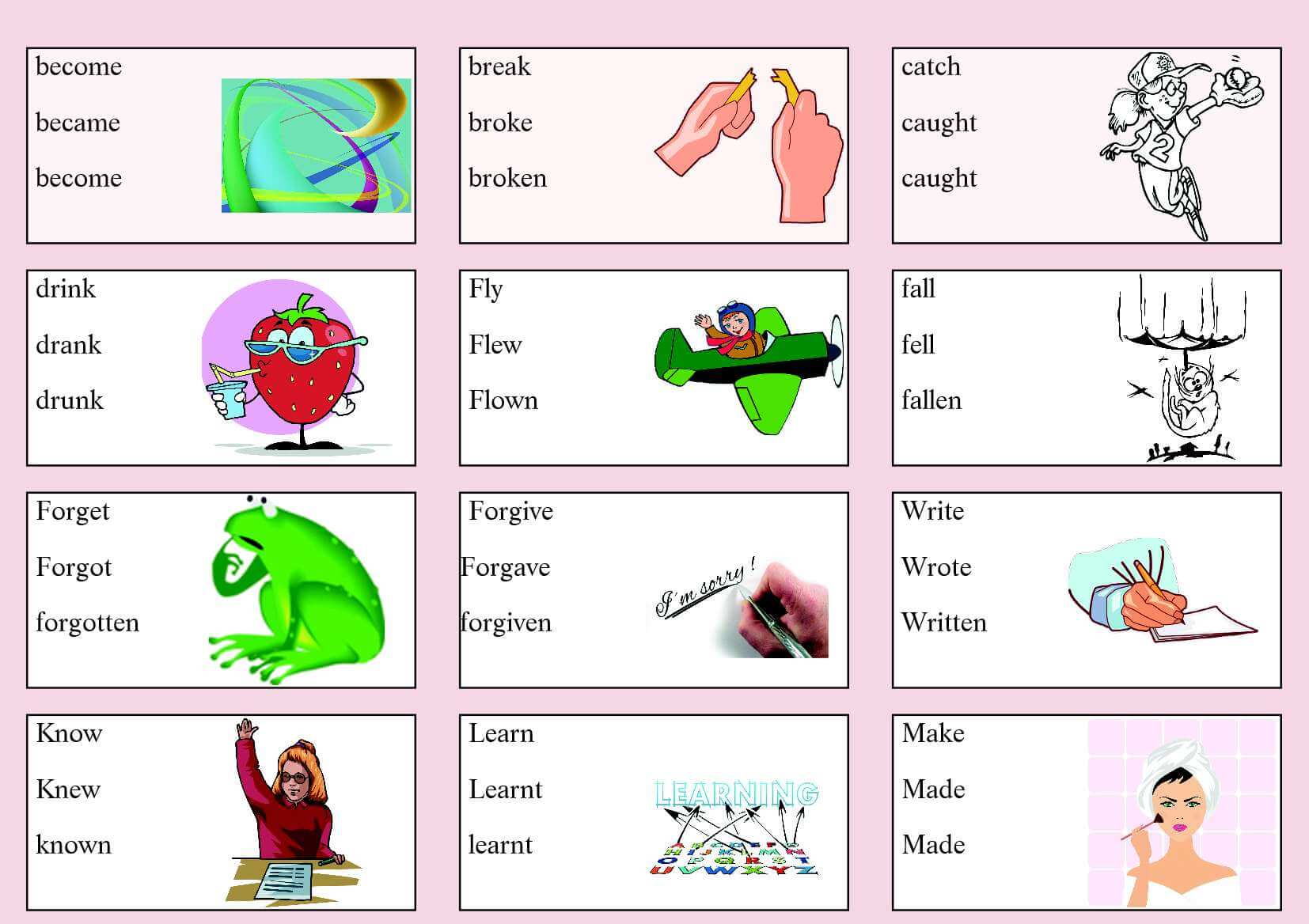
Irregular verbs – Snowballs
Do Snowball 2 the next day. Then do Snowballs 3-10 one each day. Snowball 1 – full screen Snowball 2 – full screen Snowball 3 – full screen Snowball 4 – full screen Snowball 5 – full screen ADVERT:
[showmyadsa] Snowball 6 – full screen Snowball 7 – full screen Snowball 8 – full screen Snowball 9 – full screen Snowball 10 – full screen
The verb HAVE GOT is used mainly in British English and in many British textbooks it is taught immediately after the verb TO BE. I think it complicates things a bit for learners, and therefore, I wanted to make it a bit simpler for my students.
<!– wp:more –>
In this post, you will find an infographic explaining the creation of short answers. Moreover, there is a simple worksheet which teaches the creation of questions with the verb HAVE GOT. At the end, you will find a simple speaking activity to practise the questions and short answers.
ADVERT:
[showmyads]
In this post, we suppose that your students already know how to form the affirmative sentences with the verb HAVE GOT, as we explained those in the previous posts. You can find a simple rhyme to teach the affirmative forms of the verb HAVE GOT here and the infographic with all the forms here.
Verb HAVE GOT – creating questions
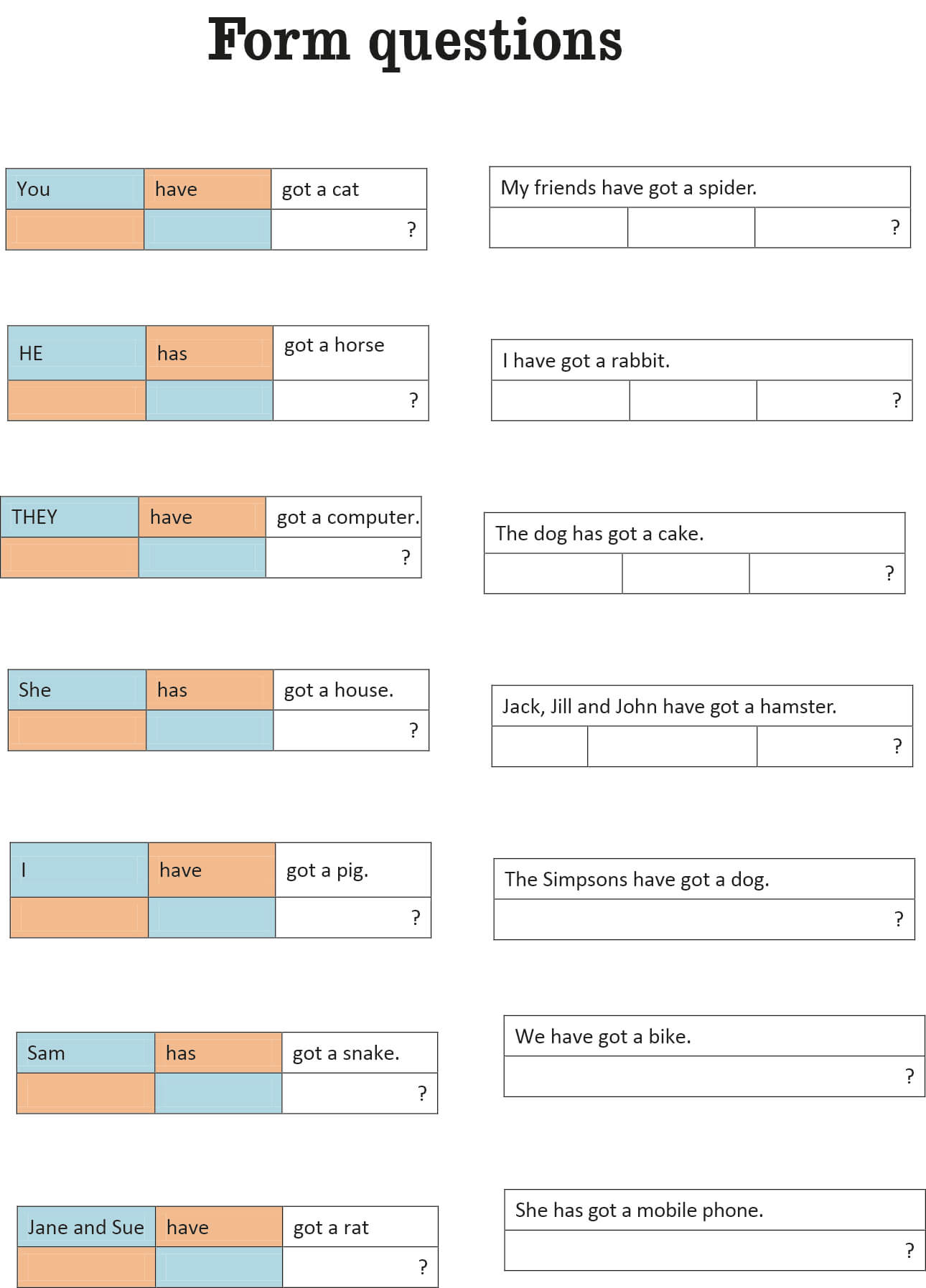
Once they finish, check their answers.
Verb HAVE GOT – short answers
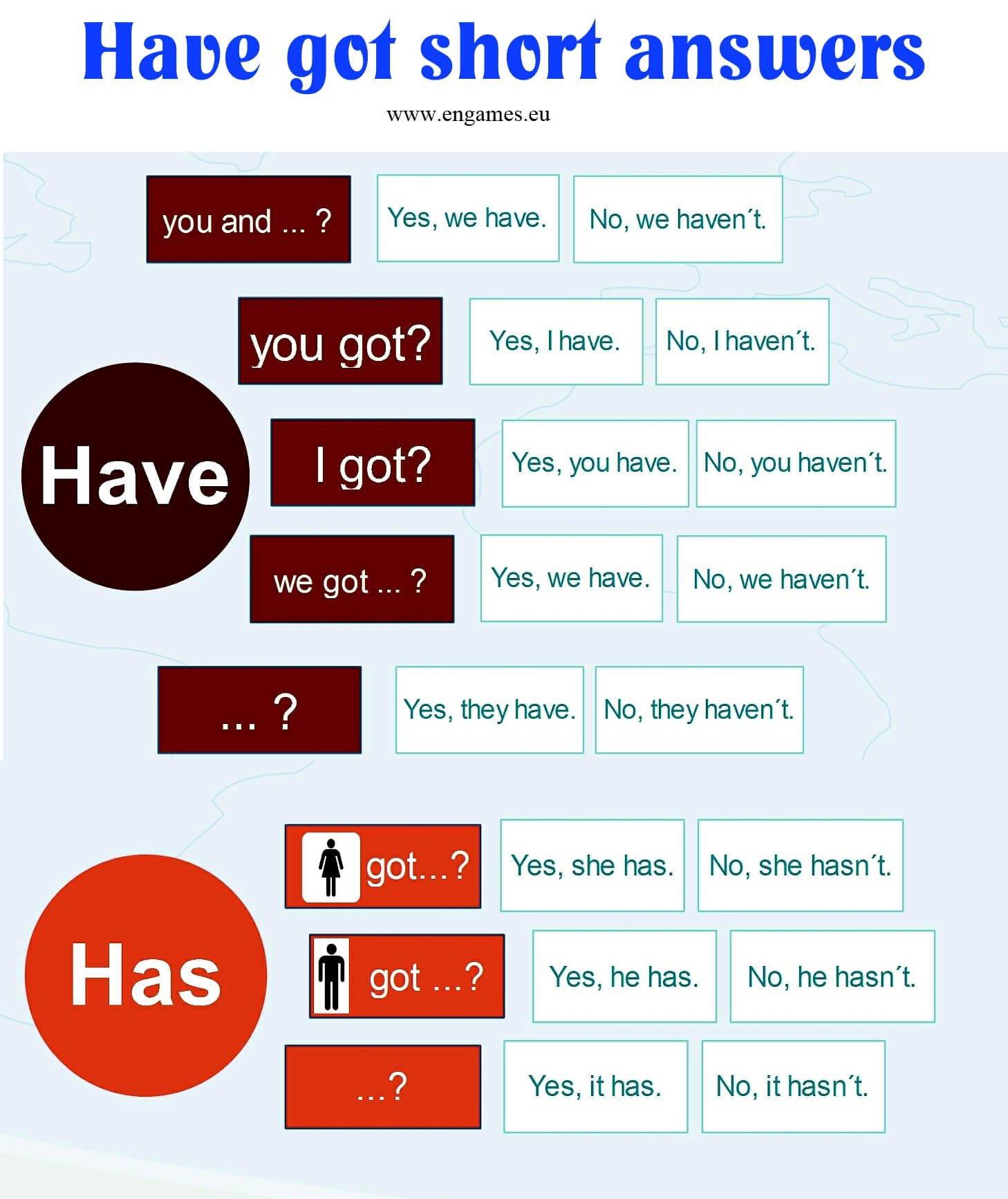
The first question from the worksheet above is: Have you got a cat.
Elicit what word the question starts with. (“Does it start with HAVE or HAS?”) Point to the words HAVE and HAS. Students answer HAVE.
“Is it followed by YOU AND …?” Students answer NO.
“Is it followed by YOU …?” Students answer YES. (do not forget to point).
“Then the answer is either ´Yes, I have.´ or ´No, I haven´t.´” (Point)
Ask a student to come to the board and do the same with the second question. Do the same with the third question. Then ask the students to work on their own and write the possible answers below the questions.
ADVERT:
[showmyadsa] Verb HAVE GOT – pdf file
Verb HAVE GOT – speaking activity
1. Have you got an English book?
2. Have you got a dictionary?
3. What have you got in your bag?
4. What have you got in your pocket?
5. Have you got a pet?
6. What pet have you got?
7. What have you got in your pencil case?
8. Have you got a watch?
9. Where have you got your keys?
10. Have you got an exercise book?
11. Have you got a red pen?
12. Have you got a car?
13. Have your parents got a house?
14. Have your parents got a car?
15. Have you got a mobile phone?
16. Has your mother got long hair?
17. Has your father got blue eyes?
18. Has your mother got fair hair?
19. Have you got a computer?
20. Have you got a television in your bedroom?
ADVERT:
[showmyadsa]
Picture dictionaries are very popular among learners of English. In this post, I would like to offer you a pictionary with vocabulary connected with Modern Technology. This post contains an infographic, a crossword and three games.
<!– wp:more –>
Machines and appliances – infographic
ADVERT:
[showmyads]

It is a good idea to drill the pronunciation first. Then ask the students to learn the words. I usually give my students about five minutes to do this.
Then hand out the following crossword. Ask the students to complete the crossword. They can use the original infographic if they need to.

You can print the infographic and the crossword using the following pdf file.
Machines and appliances – worksheet pdfModern Technology – games
ADVERT:
[showmyadsa] Dice game [/tabcontent] [tabcontent] The second games is called Guess the time. Your task is to type what you see in the picture (do not use CAPITAL letters). If your answer is correct, a countdown will appear on the screen. Your task is to stop the countdown at the moment it reaches zero. The closer to zero you stop it the more points you get.
ADVERT:
[showmyadsa]
Guess the time – full screen
[/tabcontent]
[tabcontent]
The third game is called Guess the Length. Once again, you will see a picture and your task is to type the correct word (do not use CAPITAL letters). If your answer is correct a line will appear on the screen. Your task is to guess how long the line is.
ADVERT:
[showmyadsa]
You can find some more materials to teach about Technology at British Council site.
Verb master board game is intended to replace drills. The aim of this game is to help students learn to form verb tenses. While drills are boring, board games are interesting and fun. Thus, students practise the grammar forms and enjoy it.
<!– wp:more –>
The great advantage of the Verb master game is the fact that the game is nearly universal. It is designed in such a way that you can practise nearly any English tense there is. So you just print the game once and then you can use it as many times as you like or your students like.
ADVERT:
[showmyads]
Verb master – board game

You can download the pdf file here: Verb master game – pdf file
The great advantage of the game is, that you can arrange students into various groups of various sizes.
Ask students to find something that will serve as a counter. Hand out one game and one die for each group.
Tell students what tense they have to form, for example, present continuous. Students throw the dice and move along. When they finish their move, they have to say the sentence they landed on using the given tense. If they form the sentence correctly, they stay where they are. However, if they make a mistake, they have to go back to the start. (This rule might seem a bit harsh, but it makes the game more exciting and students pay more attention to the sentences their partners are saying.)
I always prepare the keys for each group and I hand them out before the game starts. You will find several of the keys below.
ADVERT:
[showmyads]
[wptabsy]
[tab]Pr. continuous[/tab]
[tab]Past continuous[/tab]
[tab]Past simple[/tab]
[tab]Pr. simple[/tab]
[tabcontent]1. I am going to school.
2. She is reading a book.
3. They are writing a letter.
4. We are singing a song.
5. They are running fast.
6. She is drinking lemonade.
7. The cat is eating fish.
8. Kate is doing her homework.
9. Dave is driving a car.
10. The baby is sleeping.
11. They are playing chess.
12. Mike is sitting.
13. I am swimming.
14. She is watching TV.
15. She is feeding birds.
16. She is talking on the phone.
17. They are dancing.
18. Sue is flying.
19. The child is crying.
20. The boy is building a snowman.
21. He is making a cake.
[/tabcontent]
[tabcontent]1. I was going to school.
2. She was reading a book.
3. They were writing a letter.
4. We were singing a song.
5. They were running fast.
6. She was drinking lemonade.
7. The cat was eating fish.
8. Kate was doing her homework.
9. Dave was driving a car.
10. The baby was sleeping.
11. They were playing chess.
12. Mike was sitting.
13. I was swimming.
14. She was watching TV.
15. She was feeding birds.
16. She was talking on the phone.
17. They were dancing.
18. Sue was flying.
19. The child was crying.
20. The boy was building a snowman.
21. He was making a cake.
[/tabcontent]
[tabcontent]1. I went to school.
2. She read a book.
3. They wrote a letter.
4. We sang a song.
5. They ran fast.
6. She drank lemonade.
7. The cat ate fish.
8. Kate did her homework.
9. Dave drove a car.
10. The baby slept.
11. They played chess.
12. Mike sat.
13. I swam.
14. She watched TV.
15. She fed birds.
16. She talked on the phone.
17. They danced.
18. Sue flew.
19. The child cried.
20. The boy built a snowman.
21. He made a cake.
[/tabcontent]
[tabcontent]1. I go to school.
2. She reads a book.
3. They write a letter.
4. We sing a song.
5. They run fast.
6. She drinks lemonade.
7. The cat eats fish.
8. Kate does her homework.
9. Dave drives a car.
10. The baby sleeps.
11. They play chess.
12. Mike sits.
13. I swim.
14. She watches TV.
15. She feeds birds.
16. She talks on the phone.
17. They dance.
18. Sue flies.
19. The child cries.
20. The boy builds a snowman.
21. He makes a cake.
[/tabcontent]
[/wptabsy]
Verb master board game is designed to help students practise forming verb tenses in English. You can find several other board games at our website. There is a Halloween game and Superlatives and comparatives board game. I hope you will find them useful.
Picture dictionaries are very popular among learners of English. In this post, I would like to offer you a pictionary with Machines and appliances. This post contains an infographic and a crossword. I hope you will find these useful.
<!– wp:more –>
Machines and appliances – infographic
ADVERT:
[showmyads]

It is a good idea to drill the pronunciation first. Then ask the students to learn the words. I usually give my students about five minutes to do this. Then hand out the following crossword. Let the students complete the crossword. They can use the original infographic.

You can print the infographic and the crossword using the following pdf file.
Machines and appliances – worksheet pdfBeginners have to memorise a lot of new words and grammar. To make the process a bit easier, I and my colleague came up with a set of simple grammar rhymes that help our learners remember the crucial verb forms.
ADVERT:
[showmyads]
In this post, I would like to share the rhymes with you. There is a short video for two rhymes and the text. And one of the rhymes comes only with the audio file. It seems that the best way to teach the grammar is to ask your students to memorise the poems, and then they use the underlying grammar automatically. I hope you will find these rhymes useful.
Simple grammar rhymes – Verb TO BE
I am small.
You are tall.
He is fat.
It is bad.
She is late.
It´s not great.
We are old.
They are cold.
Simple grammar rhymes – Verb HAVE GOT
She’s got a cat
He’s got a pet.
I’ve got a ball.
You’ve got a doll.
We’ve got a house.
They’ve got a mouse.
Sue’s got a parrot
It’s got a carrot.
Simple grammar rhymes – Present simple tense
You say.
I play.
We learn.
They turn.
He works.
She talks.
It rains.
He trains.
They live.
We make.
We give.
They take.
And here is just the audio recording:
Present simple – simple grammar rhyme MP3
ADVERT:
[showmyadsa]
Simple grammar rhymes – How to use them
If you teach a monolingual class, it is a good idea to translate the rhyme.
In the following lesson, I ask the students to recite the rhyme and I introduce the grammar and we do several exercises.
I have to say that it really works and it is much easier for the students to learn and understand the grammar then.

